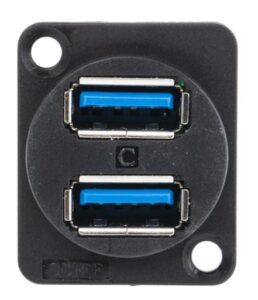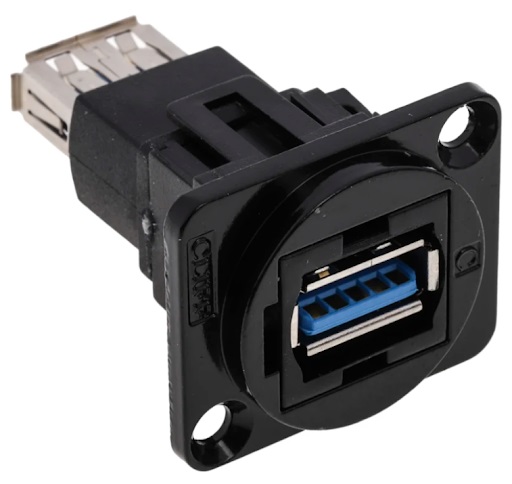In the realm of modern technology, where devices seamlessly communicate and share information, the USB connector stands as a universal gateway, facilitating connectivity across a myriad of gadgets. From the humble beginnings of the Universal Serial Bus (USB) standard to the diverse array of connectors available today, this article explores the evolution and versatility of USB connectors, showcasing their pivotal role in the interconnected world we inhabit.
Genesis of USB:
The USB story began in the mid-1990s when a consortium of companies, including Intel, Compaq, and Microsoft, collaborated to create a standardized connection interface. The result was the Universal Serial Bus, designed to simplify and streamline the process of connecting various devices to computers. The first USB specification, USB 1.0, was introduced in 1996, offering a significant improvement over existing connections with its plug-and-play functionality.
USB Evolution:
Since its inception, the USB standard has undergone several iterations, each bringing enhanced features and increased data transfer speeds. USB 2.0, introduced in 2000, marked a notable advancement with faster data transfer rates and improved power delivery. USB 3.0, launched in 2008, further increased data transfer speeds and introduced the concept of “SuperSpeed USB.” Subsequent iterations, including USB 3.1 and USB 3.2, continued the trend of faster data transfer and improved efficiency.
USB Connectors: A Diverse Landscape:
The evolution of USB also gave rise to a diverse landscape of connectors, each USB connector malaysai designed to cater to specific needs and scenarios. The standard USB Type-A connector, recognized by its rectangular shape, remains ubiquitous, found on devices ranging from computers to printers. The smaller, reversible USB Type-B connector is often employed in devices like printers and scanners.
The introduction of the compact USB Type-C connector marked a significant leap forward in terms of versatility. With its reversible design, the USB Type-C connector simplified the often frustrating process of plugging in devices, eliminating the need to ensure the correct orientation. USB Type-C, now widely adopted across various devices, including smartphones and laptops, supports faster data transfer and higher power delivery.
Power Delivery and Charging:
USB connectors not only facilitate data transfer but also play a crucial role in power delivery and charging. The USB Power Delivery (USB PD) standard, introduced with USB 3.1, allows devices to negotiate power requirements, enabling faster charging for smartphones, tablets, and laptops. USB connectors have become the go-to solution for charging, providing a standardized and widely compatible method for powering up an array of devices.
Versatility Across Devices:
One of the USB connector’s standout features is its versatility across a wide range of devices. USB connectors are found in smartphones, tablets, cameras, external hard drives, audio devices, and an extensive array of peripherals. The standardized nature of USB ensures that users can connect devices seamlessly without the need for proprietary cables or adapters, fostering a more user-friendly and interconnected ecosystem.
USB in Audio and Video:
USB connectors have extended their reach beyond traditional data transfer and charging functions into the realms of audio and video. USB audio interfaces have become commonplace, providing high-quality sound for music enthusiasts and professionals alike. USB webcams and cameras leverage the standard for video streaming and conferencing, adding another dimension to the USB connector’s utility.
USB in External Storage:
The advent of portable storage solutions has seen USB connectors play a central role in the realm of external drives. USB flash drives, external hard disk drives, and solid-state drives utilize USB connections for quick and efficient data transfer. The versatility of USB connectors in storage devices ensures that users can easily expand their device’s storage capacity or transfer large files between computers.
The Future of USB:
Looking ahead, USB connectors continue to evolve to meet the demands of an increasingly connected world. USB4, the latest iteration as of my knowledge cutoff in 2022, brings further improvements in data transfer speeds and power delivery. USB4 is designed to unify the USB-C and Thunderbolt 3 standards, enhancing compatibility and simplifying the user experience.

Conclusion:
The USB connector, born out of a collaborative effort to simplify device connectivity, has evolved into an indispensable element of our digital lives. From the pioneering days of USB 1.0 to the contemporary landscape of USB Type-C and USB4, these connectors have adapted to the changing technological landscape. Their universality, versatility, and standardized design have made USB connectors a linchpin in the interconnected world of modern devices, ensuring seamless communication and data transfer across a diverse array of gadgets. As we continue to witness technological advancements, the USB connector remains a symbol of connectivity, bridging the gaps between devices and propelling us into an era of unparalleled digital convenience.
